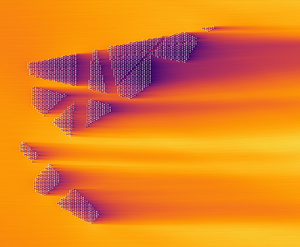Siegfried Raasch
In the German North Sea and Baltic Sea, wind farms with a total nominal capacity of 40 GW are to be installed by 2040. To achieve this expansion target, large parts of the Exclusive Economic Zone (EEZ) will be occupied by wind farms.
As the erected wind farms are located in the delayed wake of the surrounding wind farms, the energy yield will be lower than with previous free-standing wind farms. The aim of this project is to better estimate the power losses and to identify and understand the meteorological processes that are important for this. To this end, the flow of potential wind farms is simulated with the PALM large-eddy simulation model. This involves investigating how, for example, the wind direction or the wind turbine spacing affect the energy yield. PALM explicitly resolves the large, energy-laden eddies, which allows the turbulent energy flows and thus ultimately the energy yield to be calculated precisely. Energy exchange strengthening or weakening effects due to unstable or stable atmospheric stratification are also taken into account by the model.
The simulation results are used by the BSH to derive specifications for the power to be installed for future wind farms.





